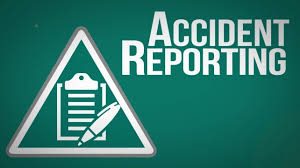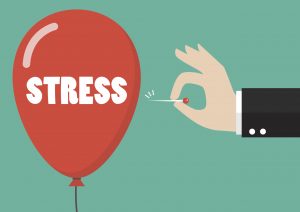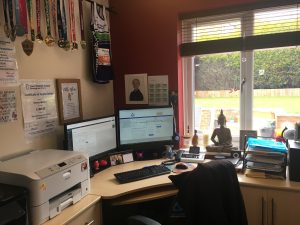
You must only make a report under RIDDOR (The Reporting of Injuries, Diseases and Dangerous Occurrences Regulations 2013) when:
• an unintended incident at work has led to someone’s possible or actual exposure to coronavirus. This must be reported as a dangerous occurrence.
• a worker has been diagnosed as having COVID 19 and there is reasonable evidence that it was caused by exposure at work. This must be reported as a case of disease.
• a worker dies as a result of occupational exposure to coronavirus.
Dangerous occurrences
Read about RIDDOR 1
If something happens at work which results in (or could result in) the release or escape of coronavirus you must report this as a dangerous occurrence. An example of a dangerous occurrence would be a lab worker accidentally smashing a glass vial containing coronavirus, leading to people being exposed.
Cases of disease: exposure to a biological agent
Read about RIDDOR 2
If there is reasonable evidence that someone diagnosed with COVID-19 was likely exposed because of their work you must report this as an exposure to a biological agent using the case of disease report. An example of a work-related exposure to coronavirus would be a health care professional who is diagnosed with COVID-19 after treating patients with COVID-19.
Read about RIDDOR 3
If someone dies as a result of a work-related exposure to coronavirus and this is confirmed as the likely cause of death by a registered medical practitioner, then you must report this as a death due to exposure to a biological agent using the ‘case of disease’ report form. You must report workplace fatalities to HSE by the quickest practicable means without delay and send a report of that fatality within 10 days of the incident.
Find out more about reporting incidents 4
Contact us if you require further information.


Within a relatively short space of time, the coronavirus has radically changed working life around the world, perhaps forever in the case of some organisations. Never before has workplace cleaning taken on life and death implications across so many different types of work settings.
There have always been workplaces when good hygiene is, quite simply, a matter of life and death. Nurses and doctors understand full well the importance of scrupulously clean, disinfected operating theatres. Likewise, food safety experts have long emphasised the importance of caterers and other food industry workers being sure to diligently cleanse fresh produce and sanitise kitchen working surfaces and other equipment.
It should be noted that deep cleaning isn’t really a scientific term as such. The latest UK Government advice published in March 2020 by Public Health England (PHE) refers simply to the “cleaning” of workplaces and working areas which may have been contaminated by the COVID-19 virus. The new guidance, specifically written in the context of COVID-19, has been published using the health authorities’ experiences of other viruses within the corona family, such as SARS and MERS, and will no doubt be updated as more is discovered about the virus.
It may, firstly, be useful to distinguish between cleaning and disinfecting:-
Cleaning refers to the removal of germs, dirt and impurities from surfaces. It does not kill germs, but by removing them, it lowers their numbers and the risk of spreading infection.
Disinfecting refers to using chemicals, for example suitable disinfectants, to kill germs on surfaces. This process does not necessarily clean dirty surfaces or remove germs, but by killing germs on a surface after cleaning, it can further lower the risk of spreading infection.
Any kind of workplace might need deep cleaning if there has been the risk of contact with someone with COVID-19 and, of course, there are specialist guidelines for healthcare settings such as hospital wards and operating theatres. The new advice from PHE however focuses on non-healthcare environments which could include settings such as:
The amount of virus living on surfaces will reduce significantly after 72 hours. If a workplace area can be kept closed and secure, wait until this time has passed before cleaning.
Wherever possible, wear disposable or washing-up gloves and aprons for cleaning. This is the minimum personal protective equipment (PPE) to be worn for cleaning a workplace area where a person with possible or confirmed COVID-19 has been. These should then be double-bagged, stored securely for 72 hours and then thrown away in the regular rubbish after cleaning is finished.
Avoid creating splashes and spray when cleaning. Wash hands regularly with soap and water for 20 seconds. After all PPE has been removed, wash hands with soap and water for 20 seconds.
Remember: wiping down an area with normal household disinfectant after someone with suspected COVID-19 has left will reduce the risk of passing the infection on to other people.
PHE recommends using disposable cloths or paper roll to wipe down all hard surfaces, chairs, door handles and sanitary fittings, and using disposable mop heads for the floors.
It is important to follow the manufacturer’s instructions for dilution, application and contact times for all detergents and disinfectants.
Public areas where a symptomatic individual has passed through and spent minimal time, such as corridors, and which are not visibly contaminated with body fluids can simply be cleaned thoroughly as normal. Any cloths and mop heads used should be disposed of and put into waste bags as outlined below.
PHE suggests using steam cleaning when items cannot be cleaned using detergents or laundered, for example in the case of upholstered furniture and mattresses.
The PHE suggests washing items in accordance with the manufacturer’s instructions but using the warmest water setting and drying items completely. Dirty laundry that has been in contact with an unwell person can be washed with other people’s items, according to the guidance.
However, cleaners should be trained not to shake out dirty laundry, in order to minimise the possibility of dispersing virus through the air.
Anything used for transporting laundry with the company’s usual products, should be cleaned and disinfected in line with the latest PHE cleaning guidance.
Waste, including disposable cloths and tissues, should be put in a plastic rubbish bag and tied when full. Waste should be stored safely and kept away from children. Waste should not be put in communal waste areas but disposed of immediately.
At a time when millions of British employees are working from home, with homes having become the new global workplace practically overnight, the above principles can usefully be applied to home offices too.
However, the COVID-19 situation is fast-changing and unprecedented. Scientists’ work with COVID-19 is, at the time of writing, ongoing and so it is important to check Government guidance regularly for any changes and keep up to date with expert advice on the subject.
Contact us if you require further information.
Keep safe!!!
 Amid all the uncertainties and disruption caused by COVID-19, an awareness of how your team is coping is all-important. How can managers reduce stress for themselves and employees.
Amid all the uncertainties and disruption caused by COVID-19, an awareness of how your team is coping is all-important. How can managers reduce stress for themselves and employees.
From a country in lockdown with schools closed for the foreseeable future, to queues around supermarkets and often contradictory media messages, the coronavirus or COVID-19 is causing significant disruption to day-to-day lives. Not surprisingly, this brings with it a host of additional stresses and anxieties.
Stress is defined by the Health and Safety Executive (HSE) as “the adverse reaction people have to excessive pressures or other types of demand placed on them”, and can be caused by a lack of control over a situation, uncertainty, change, a lack of information, or too much to do.
It is fair to say that the impacts of COVID-19 press all of these buttons.
How work can cause stress
When considering workplaces, the HSE outlines six areas of work design that have the potential to cause stress.
1. Demand, for example setting deadlines that are not possible to meet.
2. Control, for example having no say in how tasks should be done.
3. Support, for example assuming that there are no issues if no one raises any concerns.
4. Role, for example not being clear about expectations.
5. Relationships, for example passing pressures onto the team or not resolving issues quickly.
6. Change, for example not communicating change until the last minute or not doing so clearly.
Looking at these, it is clear that at the top of any coronavirus-related stresses is people’s home life, for example worry about family members or having to home-school small children, the current situation also has the potential to cause additional workplace stress on employees.
For example:
• reduced staffing levels due to staff self-isolating will add to workloads
• it is very likely that the organisation is rapidly changing as it adopts new processes in response to Government advice, eg the closure of sites or changes in priorities
• staff might not feel they have enough information or support to do the job properly.
When considering that many will already be experiencing a high level of change and anxiety, actively managing work-related stress levels will be critical to keeping staff safe and well.
Stress and health and safety legislation
Workplace stress is covered by employers’ duties under health and safety legislation. However, companies not only have a legal duty to protect against undue stress, there is also a moral duty to check that their people are coping; and it goes without saying that protecting employees from a deterioration of their mental health will help them fulfil their duties and manage over the long term.
Look at our previous blogs covering stress. Managing Stress and Understanding Stress.
How can employers reduce stress during the COVID-19 pandemic?
Although many employees will be facing additional stresses in their home life, managers are not expected to resolve each individual’s personal issues. However, they can be aware of a team member’s situation and be mindful of how work demands might create a level of stress that is unmanageable.
Actions managers could take to help reduce pressures caused by the current situation around COVID-19 include:
• establishing regular, open communication with staff
• rotating job roles through high and low-stress activities
• allowing flexible working or adjusting work patterns so that those who have to care for others (eg children currently out of school) are able to juggle both home and work life
• using a buddy system (like that employed when people are lone working) to provide additional support
• listening to concerns and suggestions from team members (both in terms of operational suggestions and personal requests) and letting them know if any feedback is acted on
• making sure staff are aware of any mental health support services or employee assistance programmes provided by the organisation
• encouraging breaks, and leading by example
• maintaining a sense of purpose, calm and normality wherever possible — when people face a lot of uncertainty, having a clear direction and some certainty can be reassuring
• helping staff stay positive by recognising the situation, acknowledging what staff are managing to achieve and providing encouragement
• being mindful of those who have had to change tasks — consider teaming them up with a more experienced member of staff and check that they feel they have had enough training.
It is also worth remembering that managers are not going to be immune from the impact of stress any more than their team. If there is a caring and understanding mentality at board level, then this will filter down.
Staff working from home
Most people who are office based will currently be working from home. With this come additional pressures, such as the following.
• Isolation — homeworking can be blissfully quiet, but when people are not used to working away from the workplace, or live on their own, peaceful solitude can slip into loneliness.
• Distractions — people need a continuous period of time in which to work. This is not always understood by others, who might not appreciate the impact of seemingly small distractions.
Employees trying to manage home schooling might find this aspect of home working particularly difficult.
• A lack of structure — an absence of boundaries about when to stop and start working can be hard for people to manage at first. They may also feel like they have to be available all the time to prove that they are working. Some may also work well into the night which can cause disruption to sleep due to not having enough time to “switch off” and too much blue light exposure.
Managers should consider the following actions to tackle these stressors.
• Help team members establish a routine by agreeing a clear work schedule that fits in with their needs and keeping this under review.
• Be understanding of the difficulties faced by team members; “business as usual” is unlikely to be an option for everyone.
• Agree with team members how to best communicate, bearing in mind individual requirements as well as your needs as a manager — for teams usually working together in an office, a daily conference call is a good starting point.
• Talk team members through finding a suitable place to work that allows them to avoid distractions. This could be included as part of any display screen equipment check.
• Encourage team members to stay connected.
Stay safe, contact us should you require further information.

Monday Morning Desk!
No morning commute, no stopping by your colleague’s desk to say hello, no lunch at your favourite restaurant or café around the corner from the office — the daily routine is feeling much different for many workers as the world works to contain COVID-19. If working from home is creating challenges for you, we are here to help. We have worked from our home offices, kitchens, couches, favourite cafés (not possible right now, sadly), and a range of other locations with a Wi-Fi signal. Consider these tips to stay productive, healthy, and sane as you adjust to your new way of life.
The Coronavirus has created the most challenging and difficult time for us all. I hope our tips will provide ideas for you and encourage you all to stay connected with each other and be kind to one another.
This probably goes against every expert’s tips for managing your time while working, but I find that verbal communication helps me focus on my work. When the conversation is over. I need to talk. Emailing, texting, or other messaging just doesn’t cut it.
I am not talking hours of time, but when I was in the office, I needed to get up and visit someone face-to-face instead of asking my question electronically. Not always, but when it involved more than a simple explanation on my end or a quick answer on theirs. It’s collaboration, and sometimes you get even better ideas from that discussion.
Now that we all are isolated during these times, I find talking to someone keeps me on track, not to mention calm and less likely to go crazy. So, pick and choose which work conversations would be better over the phone or in a video meeting, and go for it. If nothing else, you’re making sure people you used to see every day are doing OK, and maybe that verbal collaboration will lead to more hacks for working from home. You could always do an email after the conversation confirming what you both said.
I would also encourage telephone calls and video chats to check in on someone. You can have group chats on FaceTime and Whats app!
We all spend significantly too much of our lives looking at the glimmer of smartphones, tablets, computers, and televisions. Each day, I aim to spend the first 45-60 minutes without looking at any of those screens. I make cup of tea. I talk to my husband, Eric about what’s on his agenda for the day. I go on a walk or a run around my neighbourhood.
It helps me feel fresh and ready to focus on tackling my work and responding to emails. In today’s current climate, which involves me tweeting and updating linked in, I find this routine to be even more essential for my mental health.
Several times a week, I like to get up early to spend time outdoors. I am happiest when I begin my day by walking up the Wrekin with my friend, no matter what the weather. It doesn’t matter how many times we have walked up the Wrekin, it’s always a struggle halfway! When we reach the top, the views are the reward. Alas, I am looking forward to returning.
Look to YouTube to keep energy high. Joe Wicks exercise plan is amazing! Or for calm look to meditation, there are many things to try. Consider having video links to encourage each other or have a giggle!!
Stick to your regular morning routine, shower, get dressed etc., if you want to wear something smart to feel good, then do it. I am currently writing this blog in Harry Potter lounge wear!
Have your breakfast!
Ensure you have a designated area to work in. Some homes are lucky and have offices, but if you haven’t got this, a kitchen table or worktop can be just as good as long as you are comfortable. The sofa may not be a good place to work as its too comfortable – if you catch my drift! Just remember you need to concentrate so having the TV on or children running around is going to disturb you. Find somewhere to call your work space.
Schedule breaks from the screen, during these breaks get some fresh air or exercise – remembering social distancing when you are out.
Have boundaries, aim to start and finish work when you normally would. Make a clean break when you’re not working and tidy your ‘office’ for the end of the day.
The best thing you can do is stay home and keep well.
For folks who aren’t used to working from home, our new reality might feel like every day is a free-for-all. In order to maintain a routine (and your sanity), consider keeping a planner to map out what each day should look like, both professionally and personally. What tasks do you need to complete for your current assignments? Which co-workers should you virtually check in with, and when? Then, what chores do you want to complete once you’ve shut your laptop for the day? If you concoct a plan for both work and home duties, they’re less likely to intersect. I know the dishes are begging to be washed but save that for once you’re off the clock.
It is important to remember you are not alone. If you’re feeling isolated, pick up the phone!
Contact us if you have any ideas for others regarding isolation.
Search through our library of blogs to keep you busy!
Keep safe!
 A beautiful scene.
A beautiful scene.
With the lockdown announced, it’s important you know we are able to provide you with your normal support service. Our team has been working remotely for the past week and we can do 98% of what needs to be done from our homes.
The only thing we can’t do, of course, is come for a site visit, but we can talk your team through most site related issues.
If you need anything we are still here to help.
In light of recent news, if you are continuing to go to work remember the guidance on social distancing. Put notices on the entrance to your premises informing people you are complying with the government guidelines and leave a telephone number for them to make contact. If your premises are open and the public can enter, try using safety tape to block off areas, add a sign requesting they do not enter, consider supplying hand santiser or soaps for them to wash their hands if they do need access.
Maybe take this time to complete some online training courses. Speak to Josh at IHASCO with the reference number WHSS.
For Online Training Click Here
Social distancing measures are steps you can take to reduce social interaction between people. This will help reduce the transmission of coronavirus (COVID-19).
They are to:
• Avoid contact with someone who is displaying symptoms of coronavirus (COVID-19). These symptoms include high temperature and/or new and continuous cough
• Avoid non-essential use of public transport when possible
• Work from home, where possible. Your employer should support you to do this. Please refer to employer guidance for more information
• Avoid large and small gatherings in public spaces, noting that pubs, restaurants, leisure centres and similar venues are currently shut as infections spread easily in closed spaces where people gather together.
• Avoid gatherings with friends and family. Keep in touch using remote technology such as phone, internet, and social media
• Use telephone or online services to contact your GP or other essential services
• Everyone should be trying to follow these measures as much as is practicable.
We strongly advise you to follow the above measures as much as you can and to significantly limit your face-to-face interaction with friends and family if possible, particularly if you:
• are over 70
• have an underlying health condition
• are pregnant
This advice is likely to be in place for some weeks.
There are general principles you can follow to help prevent the spread of respiratory viruses, including:
• washing your hands more often – with soap and water for at least 20 seconds or use a hand sanitiser when you get home or into work, when you blow your nose, sneeze or cough, eat or handle food
• avoid touching your eyes, nose, and mouth with unwashed hands
• avoid close contact with people who have symptoms
• cover your cough or sneeze with a tissue, then throw the tissue in a bin and wash your hands
• clean and disinfect frequently touched objects and surfaces in the home
Remember to look at the previous blogs for advice. They may be of benefit. Please feel free to forward our blogs onto your contacts, friends and family.
Remember to stay safe and be compliant!
Contact us – even if it just to say hello! 😊